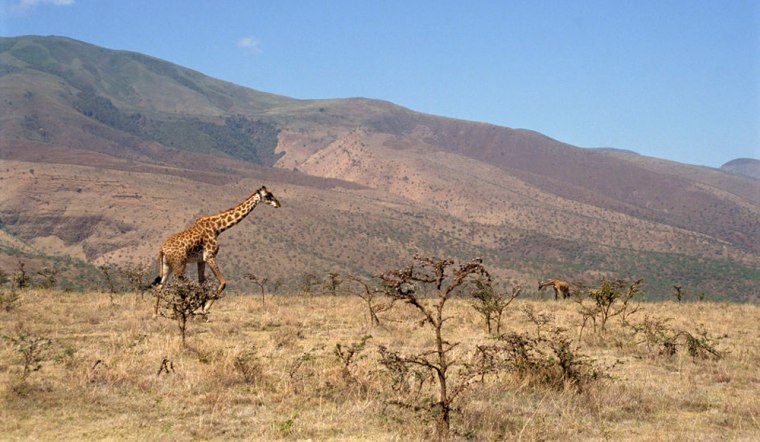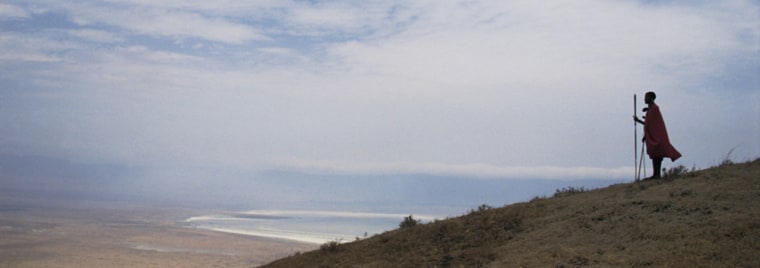Going on safari five years ago meant sticking to a clockwork itinerary.
Be it in South Africa, Kenya or Tanzania, days started with pre-dawn animal viewing followed by breakfast, a few hours of relaxation, lunch, more animal viewing and dinner. The next day? Repeat. Each day thereafter for the rest of your trip? You got it. Repeat again.
Good news: The safari market today is far more personalized, and trips can be designed to cater to any traveler's interests.
"A few years ago, there wasn't a lot of flexibility for people taking a safari," says Linda Friedman, owner of Custom Safaris, a travel company based in Bethesda, Md. "But as travel has become more specialized, so has the safari market."
Safaris used to be largely group affairs, making it difficult to tailor them to each traveler's needs. While group safaris still exist, specialists report that well-traveled clients are demanding a more individualized experience.
"Many of these are clients who have taken trips before," says Ryan Hilton, a safari specialist and co-owner of Admiral Travel Gallery, a luxury travel consultancy in Sarasota, Fla. "Now they want to go again, but to find new experiences."
Kid-friendly camp
Hilton recently planned a 10-day trip to South Africa for a family of five. The couple wanted to take a vacation that their daughters, aged seven, nine and 12, could also enjoy. Many safari camps don't allow children under 12 for fear that they will disturb other travelers.
So he booked them into the Londolozi Varty Camp in the Sabi Sand Game Reserve, which welcomes children and even has a dedicated child-activity coordinator and a children's menu.
The camp's Club Den is an activity center where kids can partake in arts and crafts projects like making elephant-dung paper. A game-drive vehicle is always on standby to take kids out on a drive where they can view leopards and cheetahs or to connect with their parents already out viewing wildlife.
Luxury is also on hand. The eight rooms here are decorated in teak wood and have large soaking tubs with panoramas of the bush.
Foodie fare
Until recently, gourmands on safari faced limitations, since meals at camps tended to be unimaginative. Now, those passionate about good eating can take a food-centric safari offered by Uncharted Outposts of Santa Fe, N.M. Sandy Cunningham, co-owner of the company, says that this year it designed more custom safaris of all kinds — 60 percent more than five years ago. The nine-day safari spans three camps in Kenya.

At Campi Ya Kanzi, guests take Italian cooking classes after their morning game drives. They make dishes like lasagna, tortellini, gelato and tiramisu from scratch and enjoy their creations each evening around a campfire flanked by views of Mount Kilimanjaro.
At Cottars 1920s Camp, they indulge in gourmet meals that use produce like lentil tomato consommé and roasted sweet potatoes from the onsite garden.
Guests of the Sanctuary at Ol Lentille work with the head chef to learn about African cuisine and use local ingredients like dairy from nearby farms to cook stews and tagines. All culinary activities are done in between game drives, where guests view dozens of animals like giraffes, antelopes and hippos.
Volunteer vacation
It's even possible to take a do-gooder safari.
The Mantis Collection, a group of boutique game reserves in South Africa, invites travelers to stay at two camps: Shamwari Game Reserve in the Eastern Cape and Sanbona Wildlife Reserve in the Western Cape. Between game drives where guests can spot black and white rhinos, leopards and lions, they can volunteer to help (alongside conservationists and wildlife experts) with rehabilitating wildlife and monitoring the ecosystem by building shelters for local community members and taking part in anti-poaching patrols.
Taking a safari isn't cheap. Most trips start at $4,000 per person for a week without airfare, but including accommodations, meals, game drives and some activities, like massages. The more customized and detailed the itinerary, the higher the price.
But since you design every step of your trip, you can chalk up the cost as the price of having total control.
